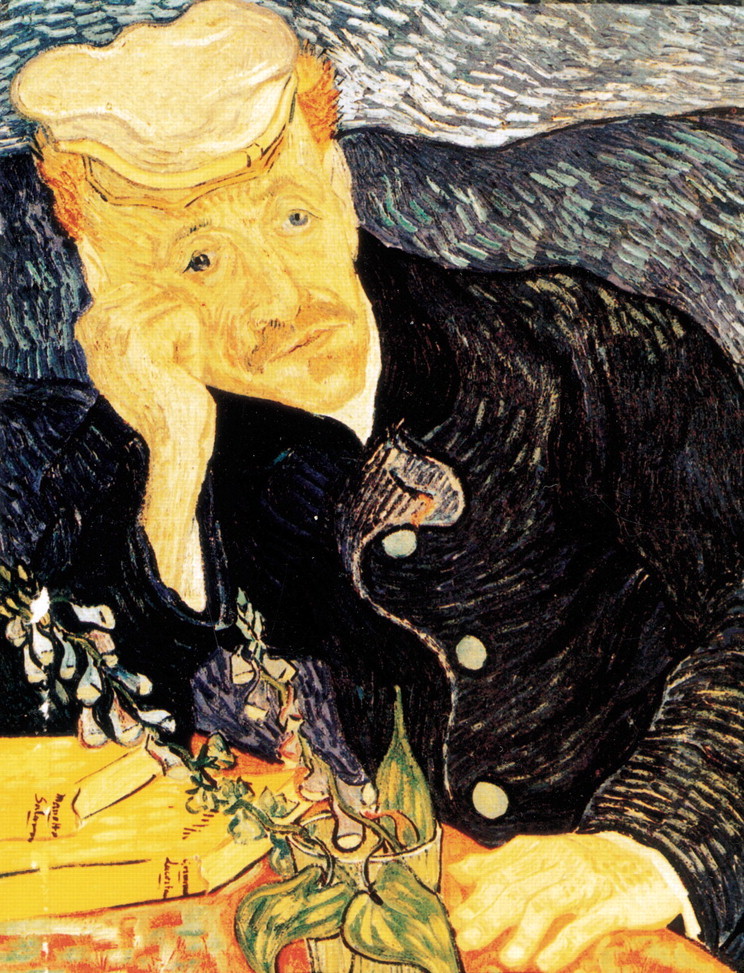A striking feature of van Gogh's famous painting “The Starry Night” is the yellow corona surrounding each star. The use of yellow characterizes many of the paintings of this Dutch post-impressionist, and much speculation surrounds van Gogh's fascination with this vibrant pigment. Did he simply like the color, or was his preference influenced by some medical condition?
Because numerous disorders have been diagnosed posthumously in this artist, various theories have been proposed to explain how van Gogh's physical state may have influenced his work. Two theories center on why he used so much yellow.
First, he was fond of absinthe, a popular liqueur containing thujone. Excessive consumption of this liqueur may cause the consumer to see all objects with a yellow hue. Investigations conducted in 1991, however, showed that a person must drink 182 liters of absinthe to produce this visual effect, so we can discount this theory.
A second and more likely explanation involves overmedication with digitalis. People receiving large and repeated doses of this drug often see the world with a yellow-green tint. They complain of seeing yellow spots surrounded by coronas, much like those in “The Starry Night.” The artitists's physician, Paul-Ferdinand Gachet, may have treated van Gogh's epilepsy with digitalis, a common practice at that time. In one of van Gogh's three portraits of Gachet, the physician holds a stem of Digitalis purpurea, the purple foxglove from which the drug is extracted (see figure).
Plagued by psychiatric illness throughout his life, van Gogh committed suicide in 1890. Evidence suggests that he had manic depression, a chronic mental illness thought affects many creative people. Although treatment with lithium carbonate is now available, the drug also dampens creative abilities. Many people believe that artists overcome suffering with their creative acts, but suffering may also overwhelm the artist. Had lithium carbonate therapy been available, van Gogh might have defeated his manic depression, avoided his tragic fate, and grown further as an artist. “If I could have worked without this accursed disease, what things I might have done,” he wrote in one of his last letters.
Figure 1.

Vincent van Gogh's portrait of his physician, Paul-Ferdinand Gachet (1890), in which Gachet holds Digitalis purpurea. Reprinted from Wolf PL: If clinical chemistry had existed then. Clin Chem 1994;40:328-335.


